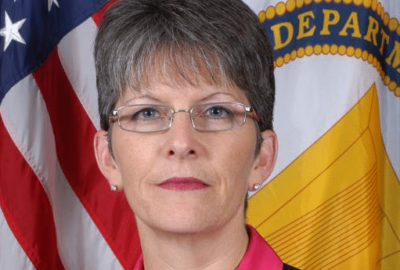
Unions and management: Can we talk?
Now more than ever unions and agency management need open communications
The late industrial quality guru Phil Crosby used to categorize organizations one of two ways — symphony orchestra or hockey game. Both types focus on a shared goal. One gets there with cooperation under an observant leader. The other with a lot of bumping and jostling and inefficiency.
The big coronavirus has given every agency a second mission: Keeping its employees safe. That extends to contractors and citizens you may come near physically. That takes the practiced cooperation of the orchestra, even if the germ behaves like an opposing hockey team.
People who can’t telework tend to work in situations where they can’t stay artificially far from one another. A case in point: the Federal Aviation Administration’s air traffic controllers. Towers and regional traffic centers keep people in close quarters by design. They work as teams, constantly talking to the airplane pilots and to one another. One shift leaves, the next shift seats itself at the same chairs, touching the same consoles.
In my interview with Trish Gilbert, the executive vice president of the National Air Traffic Controllers Association, she said FAA management worked closely to establish facility cleaning procedures and getting supplies.
Of FAA management, Gilbert said, “They reacted as quick as they possibly could, being that they are so large and they have so many boxes to check.” She added, “Doesn’t mean we weren’t frustrated, doesn’t mean we didn’t disagree. We certainly did. But eventually we got to a resolution, or one that can keep the system running to get those supplies where they need across the country but at the same time ensuring the workforce that has to be there is as safe as they possibly can be.”
That doesn’t render the threat academic. More than 32 controllers, at the time of the interview, had contracted coronavirus. Luckily all recovered.
But at least the agency and one of its major unions were communicating with one another, working out details, procedures.
I also spoke with Mike Perrone, president of the Professional Aviation Safety Specialists, or PASS. That union represents the tech ops people who keep all of the FAA equipment working. They can monitor this gear remotely, offering some degree of telework. But when a board craps out, or something goes wrong in one of those red-and-white checkerboard boxes out next to a runway, a PASS member has to go fix it. That can put them in close contact with controllers or with one another if the piece of gear requires more than two hands to fix, Perrone said.
Perrone also commended FAA management for acting cooperatively in setting up telework and other procedures for carrying out two missions — safety of people and keeping the FAA infrastructure operating.
But it’s not like that at every agency.
Looking across the government, I see a lot of stridency in union-management relations. A glance at the American Federation of Government Employees web site and you see charges of irresponsibility, rebuking the administration for imprudence, demands to keep agency buildings closed until there is universal testing for coronavirus. AFGE and other large unions have had rocky relations with the Veterans Affairs Department, Social Security Administration and the IRS.
When the IRS called back 10,000 employees to answer phones and process mail, they were also told to bring their own protective gear — specifically masks. The National Treasury Union president Tony Reardon wasn’t too pleased. Although he told Federal News Network’s Jory Heckman the agency ended up with sufficient numbers of masks after all. The Professional Managers Association president Chad Hooper cited tens of millions of pieces of mail and the need to respond to taxpayers’ questions and to make sure stimulus checks and refunds all got out.
You get the sense that while everyone is well motivated, they’re not talking enough. The rank-and-file want to get the job done, right? Management wants to avoid having people get infected with a sometimes deadly disease, right?
So tell me, are the unions and management at your agency talking?
Nearly Useless Factoid
By Alazar Moges
Cats falling from super high floors can actually survive better than cats falling from nine stories or under.
Source: Wired
Copyright © 2025 Federal News Network. All rights reserved. This website is not intended for users located within the European Economic Area.
Tom Temin is host of the Federal Drive and has been providing insight on federal technology and management issues for more than 30 years.
Follow @tteminWFED
Related Stories





